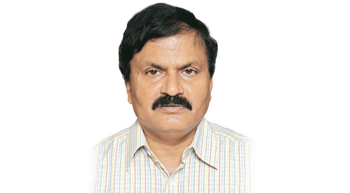Dr Guruprasad Mohapatra, Joint Secretary, Ministry of Commerce and Industry, gives insights on the initiatives taken by the Commerce Ministry to improve ease of doing business in the SEZs, and make the policy more productive in this freewheeling interview. Excerpts:
Please apprise us about the demand for withdrawal of MAT & DDT from the Finance Ministry.
We have already been demanding the removal of Minimum Alternate Tax (MAT) and Dividend Distribution Tax (DDT) from the Finance Ministry. The SEZ Promotion Council and various industrial bodies have also been making this demand as a part of pre-budget memorandum to the Finance Ministry. However, I am not able to comment on this right now.
Please tell us about the viability of SEZs in India?
Before the enactment of the SEZ Act in 2006, only nine government SEZs were functional. Post SEZ policy, India has more than 202 operational SEZs. Total exports are around five lakh crore per annum, despite the recessionary trends. The SEZs account for employment of around 14 lakh persons and the investments are to tune of three lakh crore. Some of the SEZs are really world-class hubs, having state-of-the-art infrastructure and facilities. I agree that a lot needs to be done in order to bring competitiveness and viability in these SEZs on the lines of China. When we compare Indian SEZs with those of China, there is a large gap. The concept of SEZ is definitely viable, provided the government also makes it a focus.
Please take us through the reasons for the Commerce Ministry´s demand for removal of DDT & MAT from the Finance Ministry.
The Commerce Ministry is in favour of discontinuation of MAT & DDT on book profits of SEZ developers and units. Now, the Finance Minister has to take the final call. The government is bringing down the tax rates. It´s a policy now. I hope that the tax rates will come down further as the government has been doing this from year to year. In the recently launched Foreign Trade Policy, the government has extended the Chapter 3 benefits to SEZs and industrial units. Earlier, these tax benefits were not given to Export Oriented Units (EOUs). Thus, it has given a breather to these SEZ units.
What policy initiatives do you envisage in order to make SEZ policy more productive?
First and the foremost, we need to improve infrastructure. The government also takes steps to improve single window functioning for the SEZs. The basis on which the SEZs were established was single window formula, where the entire unit approval committee is represented by all relevant government departments of the Centre as well as the states. We expect proactive involvement of the states in the SEZs, which need to develop the immediate infra¡structure or supportive infrastructure outside the SEZs for better facilitation of transportation, educational, and medical systems.
What are the steps taken by the Commerce Ministry to improve ease of doing business in SEZs?
The government has completely digitised the working of SEZs. So, now, everything is available online in order to make zero manual interfaces. The websites of various SEZs show the vacant plots in that particular zone so that the developer can apply for it. Further, we are in the process of integrating online SEZs with customs departments of exports and imports, so that the entire process will become seamless. It will reduce manual efforts of making trips to SEZs and various departments of customs. We have also started working on the pilot project in Chennai. So, these are some major steps which will definitely improve the ease of doing business in SEZs.
What are the challenges faced by SEZs developers?
One of the major challenges is land acquisition. Then lack of supporting infrastructure also creates stumbling blocks in the development of the SEZs. The developer should also be able to get environmental clearances.
The Government has allowed developers to build housing and commercial premises in the non-processing area. Please comment.
It is the new initiative of the government, allowing development of non-processing areas like shopping malls, schools, housing, etc. There is a lot of land unutilised in non-processing area.
– SUPRIYA ABHIJEET OUNDHAKAR



Leave a Reply
You must be logged in to post a comment.